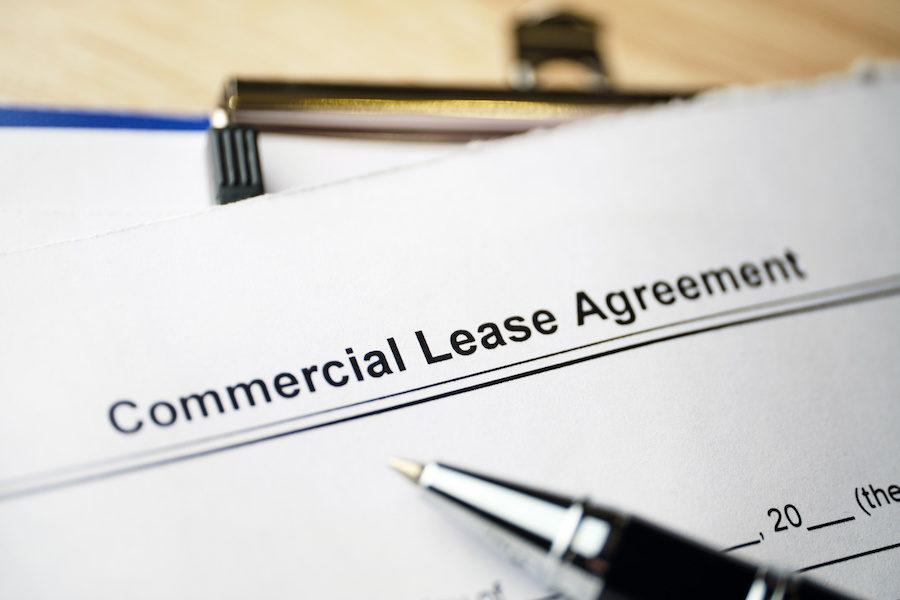If improperly negotiated, the sublease clause could be one of the most dangerous clauses in your corporate lease. Legal jargon landmines are laid out everywhere, ready to take out the budget of unsuspecting tenants.
How can you avoid this? Well, as tenant reps, we have spent over three decades making sure that corporate leases are in the best interest of tenants. This means we know what to expect during negotiations with landlords and how to draft clauses that benefit the corporate tenant.
The sublease clause, in particular, is one of the most significant commercial lease clauses, and as such, knowing its ins and outs is critical.
To prepare you to understand the sublease clause, we have laid out our market knowledge in this article. Including:
- Why sublease clauses are so important
- How the tenant’s role will shift when subleasing
- The landlord’s rights during the sublease process
These points will help you avoid wasting corporate funds and costly, time-consuming legal battles while ensuring you are in a property that keeps up with your company’s spatial needs.
Why Have a Sublease Clause in Your Lease?
Business can be unpredictable, and tenants need flexibility. As a result, your demand for space can greatly vary over a ten-year term.
For example, quickly growing companies may lease more space than they immediately need in anticipation of future expansion. In this case, they may wish to sublease the additional space for the first few years of their lease’s term.
On the other hand, your company may wish to shed extra space that was necessary upon first inhabiting the property. Needs change. You may no longer need as much square footage as you initially did. This circumstance is especially pressing amid the work from home movement.

Companies are maintaining their productivity standards, with 50/60% of their employees working from home. If this rings true for your company and you don’t have your sublease rights clearly laid out, you could be paying millions for underutilized space.
The sublease clause is an opportunity to save money while adapting to your company’s changing demand for space and external disrupter events.
The Tenant Becomes the Landlord
When the sublease clause goes into action:
- The original tenant becomes the sublandlord
- The subleasing tenant becomes the subtenant
To find a subtenant, the original tenant must go through the same advertising, marketing, and brokerage channels that the landlord did. Once they find a subtenant, the two parties must create their own leasing agreement (a separate entity from the original lease and the sublease clause.)

In the lease between the subtenant and sublandlord, the sublandlord cannot promise any rights that were not specified in the original leasing document. The landlord will retain a copy of this new lease.
The sublease clause is not to be confused with the assignment clause, in which the tenant transfers all legal responsibilities and ownership rights to a separate party. The new party becomes the primary tenant.
|
With the sublease clause, the tenant transfers property rights to a subtenant while maintaining liability over the property. |
This means that if the subtenant doesn’t pay their rent, you may be the one responsible for those payments, or you’ll be found in default.
Landlord Approval is Required
Before enacting the sublease clause, the tenant must receive written consent from the landlord. To obtain prior approval, the landlord will usually require that the tenant provides the subtenant’s:
- Name
- Address
- Evidence of financial responsibility (Credit Report, financial statement, etc.)
The landlord is within their rights to ask for subtenant identification. Naturally, they have more stake in the property than the tenant. Ensuring the subtenant is financially responsible will avoid any unnecessary strain or disruption on their building.
However, it is critical for the tenant to clearly outline the protocols and timeline of this process in the original lease. If actions and their corresponding dates are not laid out, your landlord can take advantage of vague terminology.
For example, many sublease clauses will denote that the landlord must extend prior approval in a timeline that is not “unreasonably delayed.” But, what does “unreasonably delayed” mean? Your landlord may have an entirely different definition of this term than you.

That is why it is critical to specify the number of days your landlord has to grant approval. If not, you could find yourself in a costly and time-consuming legal battle to determine exactly what qualifies as “unreasonably delayed.”
This is one of the many reasons tenants need to work hand in hand with representation. Sublease clauses are filled with nuances.
|
Even sophisticated tenants can miss out on a singular provision that can cost their company stress, capital, and time. |
A good rep works with lease clauses and landlords every day. They will make sure everything in your lease is properly spelled out to your benefit and the full extent of your rights.
No Profit Clause
Most sublease clauses bar the tenant from profiting from the sublease arrangement. As a result, you will likely be required to list the subleased property with rents far under market value for comparable properties.
Therefore, if you sublease, you will not be able to receive an extra income from the subtenant. Likely, you won’t even be able to break even.

However, the sublease clause will help you make back a percentage of the funds you would have lost to unused space. Since the subtenant will usually pay rent under market value, you will be responsible for paying the difference.
|
Landlords ensure that tenants can't profit from subleasing to a dissuade them from the business of renting out space. |
Usually, landlords want to be the party holding the primary profits, not their tenants.
Landlords may also specify their right to take back the subleased property. However, if you are prepared with your rights during negotiations, you can condition the take back. For example, the landlord may ask the tenant to state their intentions behind subleasing the space. If it is to lighten the burden of excess space, the landlord may not be able to invoke their take back right.
Why is it so Important to Understand the Sublease Clause?
There are innumerable ways landlords can take advantage of you, as the tenant.
|
It is in the tenant's best interest to either fully familiarize themselves with the sublease clause or work with someone who is, like a tenant representative. |
Knowing the ins and outs of the sublease clause will also allow you to shrewdly act on its opportunities. For example, tenants with too much space can make back some of their corporate funds. Or tenants looking for Class A office space below market rent values (and with limited responsibility) can inhabit subleased space.
No matter what action you take, though, it is critical to know your rights and how to act on them. That is why so many sophisticated tenants work with tenant reps. As real estate experts, tenant reps are fully equipped to defend your interests during the initial property search, lease clause drafting, and landlord negotiation.

They know the skills and methods to use against complex landlords and their leasing documents. A good tenant rep will fully understand your company’s needs and requirements while providing close, personalized service.
Check out this article to learn more about the benefits of working with a tenant rep.







